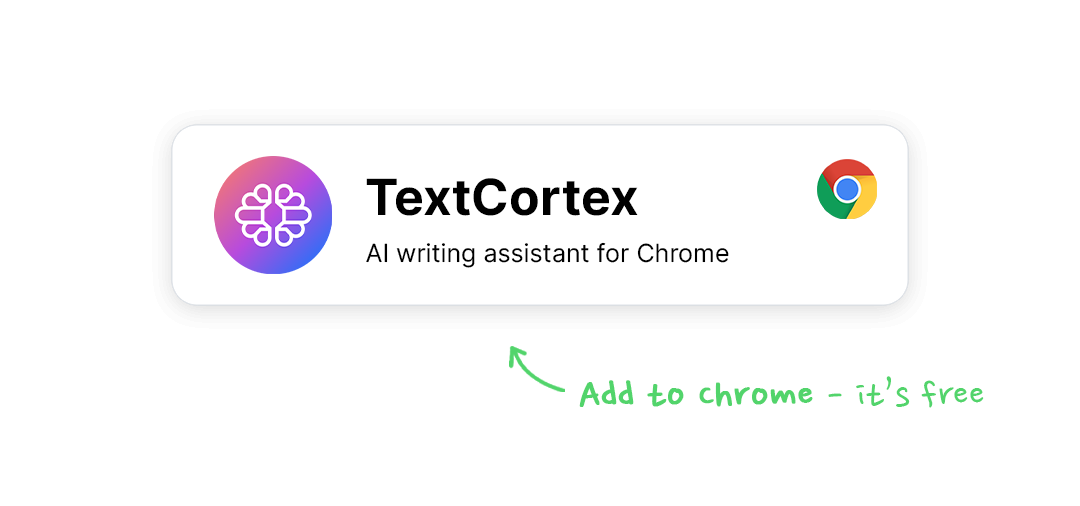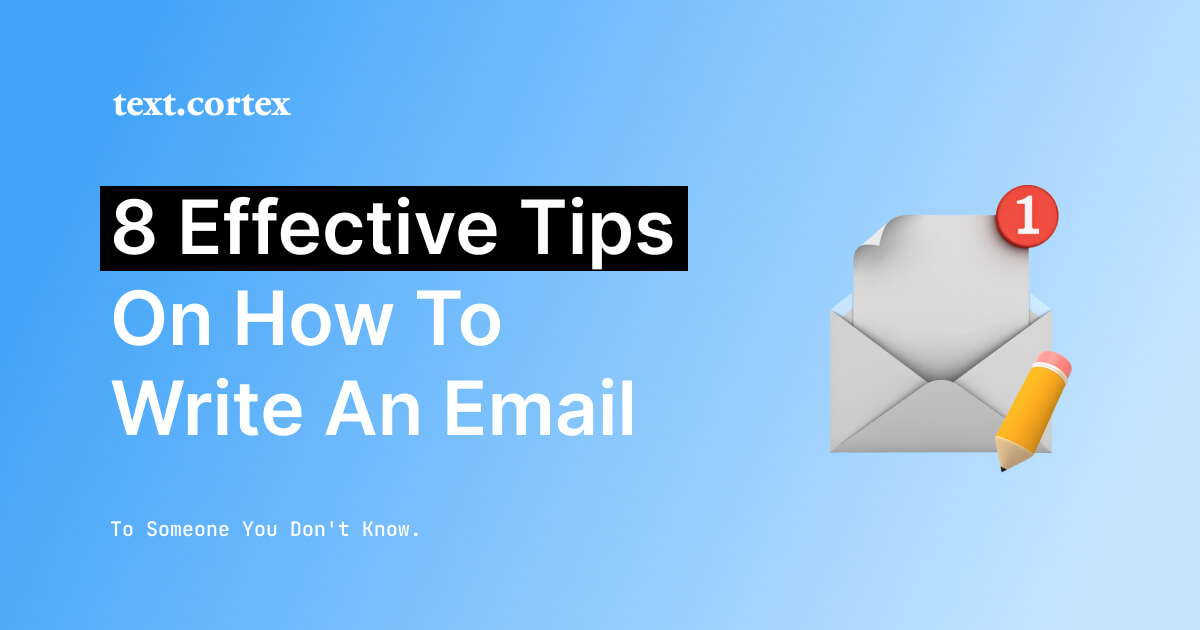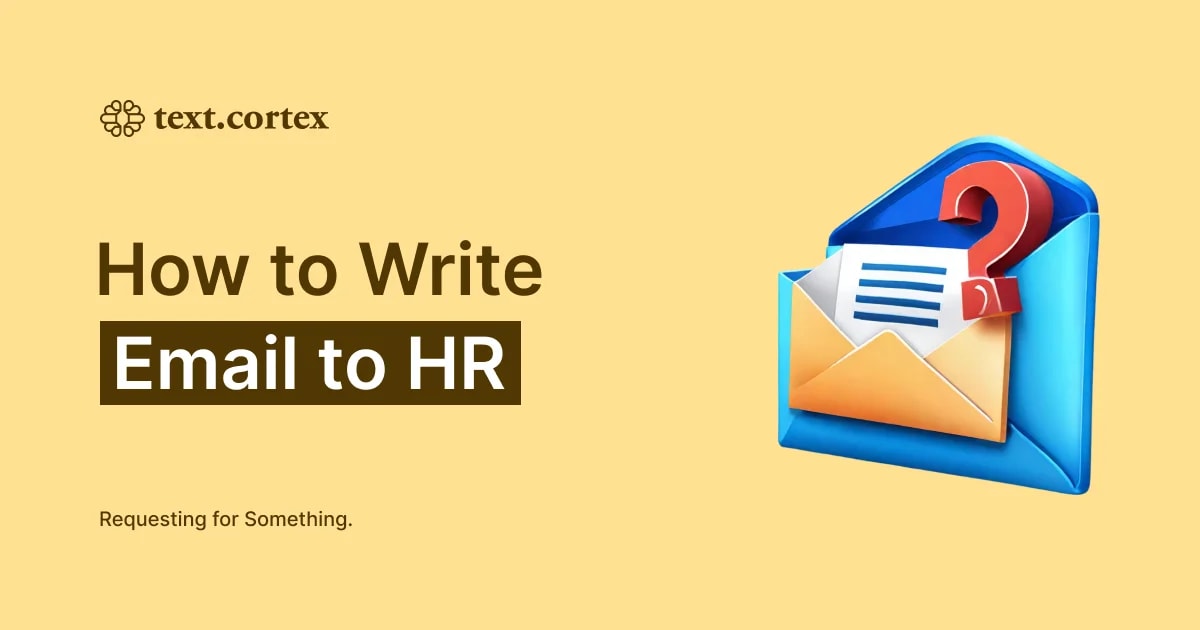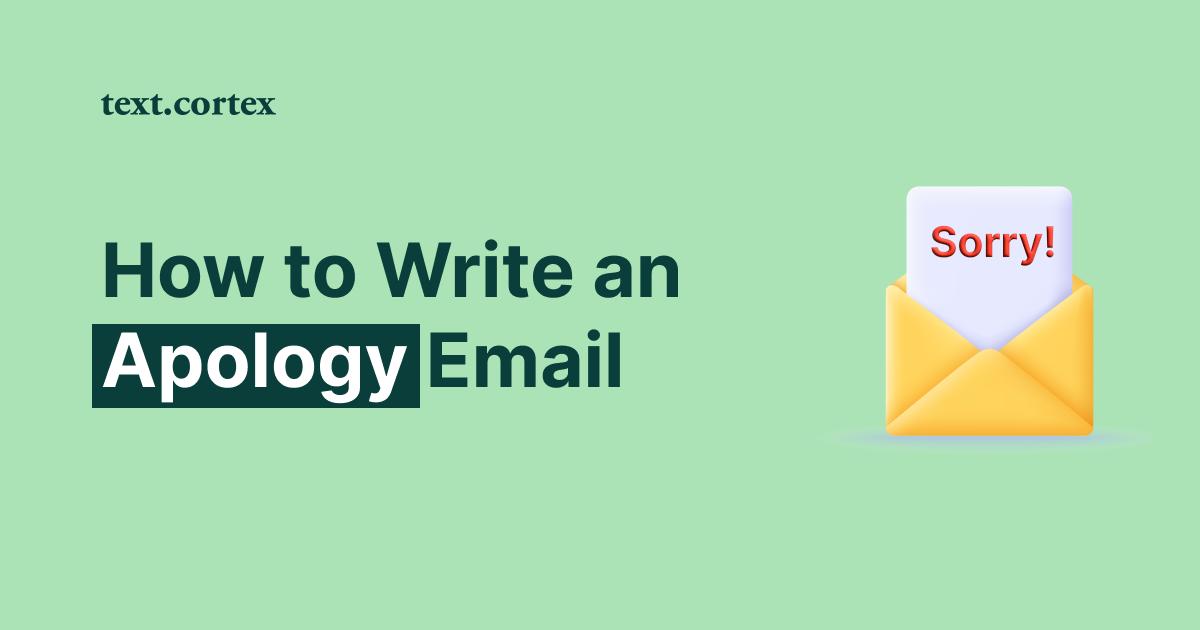If you're reading this, you are probably planning to write an email to someone you don't know.
Let's face it - most people hate getting sales and marketing emails.
And while email marketing is still a great way to grow a business, you have to do it the right way.
Emailing a friend is easy, but emailing someone you've never met can be a bit difficult and stressful.
After all, you don't know the person, you don't know their preferences.
And you're not sure whether it would be better to make your introduction through a phone call or an in-person meeting.
Even though emails can be challenging to write, there's a formula for making it easier.
In today’s article, we’ll go through the 8 practical tips on how to write an email to someone you don’t know to help you make it more uncomfortable and increase your replies.
So, let’s dive into it.
1. Do your research
So you want to email someone, and you don't know anything about them.
It is an excellent place to start if you know the person's name and which company they work for.
What I've found worked best for me when communicating with strangers before I knew them was to take time to research them, their LinkedIn profiles, past tweets or articles, etc.
You may have never thought you didn’t know your recipient until I made you aware of it.
It's essential to do your research before you send a cold email.
How can you expect them to respond if you don't know anything about the person?
Researching people is one of the first things we do when starting a new campaign or business relationship, but we frequently fail to take the time to brainstorm when we should do it.
To help you research and meet them better, put yourself in the recipient's shoes.
- Who are they?
- How can you create value?
- What is the best email subject line to get their attention?
After you find all this information about your recipients, it will be easier for you to start your email.
So here’s an example that may help you:
Hi,
I am writing to you because I read your blog post about _____. I love the way you write about _____. I think you are a person who thinks deeply about ______ and has strong opinions about it.
I'd love to chat with you about _______, but for now, here are my thoughts on the topic:
I've also attached a few articles that I think will be helpful for you.
Please let me know if this is something we can work on together!
Here, you’re showing them that you researched them well and know what you’re speaking about, which can increase your chances of getting an answer.
2. Subject line
When your email appears in someone's inbox, several signals and triggers determine whether it gets opened or not - and your subject line is one of them.
One of the biggest mistakes people make is getting carried away with too many generic details in their subject line and body.
You want your first email to have a memorable subject line, but you don't know if they'll open it.
Given this challenge, where do you start?
Here are some tips for writing subject lines that work:
- Be clear and concise - Don't try to be clever or cute — just state what your email is about in a few words that are easy to understand without having to read the body of the message.
- Make it personal - Add the recipient’s name to the subject line if you can. It shows that you're paying attention and caring about them as a person.
- Be creative — Don't be afraid to use humor or even sarcasm to grab your reader's attention. Just make sure that it aligns with your brand and company culture!
By ensuring these elements in your subject line and not making it sound generic, your chances of getting a reply will drastically increase.
Here are some examples:
Subject line #1: Collaboration idea {{firstName}}?
Subject line #2: Question about {{companyName}}
By keeping it short and clear along with personalization, your chances of getting your email read can improve.
4. Greet the person
Emails should always start with a greeting and end with a signature that includes your name and contact information.
Greetings are a standard part of any business email, but they can be tricky.
- Is it okay to use their first name?
- Should you address them by their title?
When in doubt, stick with "Dear Mr./Mrs./Ms.," which is gender-neutral and professional.
And don't worry about whether your greeting sounds like someone from another country wrote it — it's better to sound polite than polished!
If there's more than one person in charge at the company and you aren't sure who should receive the email, send it to each individual and include everyone's title in your subject line ("Re: Our meeting next week").
That way, each person will know who needs to respond first.
Here’s an example:
Dear Ms. Smith,
I'm writing to you to introduce myself and ask for your help with a project that is dear to my heart. I'm working on a book about writing with a feeling that will help people express themselves in all their communications. As part of the research for my book, I'd like to know what you think about the following statement: "Writing with feeling means being honest when you write."
Please let me know your thoughts by emailing me at [email protected]. Thank you very much for your time and consideration!
4. Identify yourself in your opening line
You have a great idea, and you want to share it.
You've been thinking about it all day, and now it's time to send off your idea via email.
But what do you say?
The first thing you need to do is identify yourself in your opening line.
If the person doesn't know who you are, they won't read any further — or worse yet, they'll think that some spammy robot has sent them a message.
If it's clear from your email signature that you're from [company], then there's no need for you to mention that again in your opening line as well.
But if you want to be sure that the reader knows who sent them an email, then something like
"Hey [name]! It's [your name]" is fine.
So here’s an example of it:
I hope this email finds you well. I am a recent graduate from the University of X, where I majored in [what you majored in]. I have been working as an intern at my current company for three months now and am looking to transition into a full-time position with them after graduation.
I loved working at [company] during my internship and feel it would be a great fit. However, since graduation is approaching soon, I wanted to reach out and see if any open positions may be a good fit for me. I am very interested in [insert relevant skills] and look forward to hearing back from you.
Thank you for your time and consideration!
Now that we've identified ourselves let's learn how to craft your email so that people will want to read it!
5. Use the body in your favor
The body of your email is the place where you can really shine.
You should use this space to show off your personality and make a connection with your reader.
You can tell them a little bit about yourself and why you're writing to them, and you'll also want to include some details about what you're looking for.
That way, the recipient will know if they can help with your request or not.

Here are some tips for writing a good email body:
- Use a friendly tone - Your goal is to make the person feel comfortable enough to respond to your email, so don't be afraid of using emoticons or exclamation marks if it helps convey that you're excited!
- Be concise and clear - If you can't explain what you need in two sentences or less, it's probably too complicated or specific for someone else to help you.
- Use bullet points and bolded text to highlight key points in your message.
- Ask questions about the specific position or person's experience and qualifications.
- Tell them how your skills could benefit them, their team, or their organization and what value you would bring to the position.
Give some background on yourself, so they get a feel for who they're talking to (maybe even include a picture).
Here’s an example of what not to do:
Hi there!
My name is Sam, and I'm an aspiring freelance writer looking for work in the content marketing field. I'm available for copywriting, blogging, and social media management jobs from $10/hour up to $30/hour, depending on experience. I also have some experience with basic HTML coding (e.g., changing font size and color) and basic graphic design skills (e.g., creating headers).
If you're interested in my work, please let me know! If not, no worries!
This email has no personality at all. It's boring, robotic, and bland.
The only thing it tells me about Sam is that he might be cheap — which isn't very professional anyway since freelancers should charge according to their level of expertise, not how much they need each job.
Here's an example of how you can do it:
Hi John,
I'm a big fan of yours, and I'd love to work with you on a project. I've attached my CV for your reference. If you'd like to discuss this further, please let me know how best to reach out!
Best wishes,
{{YourName}}
6. Provide additional details when necessary
Even though your email should be short and clear, it doesn’t mean that it should stay unfinished and without providing information to the recipient.
Be sure to include all relevant and additional information so your recipient will understand everything about you.
Here are some tips:
- If you're writing about a job application, use the word "application" or "job application" in the subject line, so your message doesn't get lost among other emails in their inboxes.
- Be as specific as possible if you're asking for a favor or requesting information.
- If you're looking for a particular person in an office, mention her name, title, and department.
- Provide additional information such as CV, portfolio, website, or anything relevant to the purpose of the mail so the recipient might go through it after reading an email.
7. Include a call to action
The purpose of your message should be clear — what do you want in return?
A response?
A meeting?
An opportunity?
Let your recipients know what they can do as soon as possible, so they don’t forget about your message.
If you’re reaching out for help, tell them what you need and why you think they can help.
If you’re offering help, explain what kind of expertise you have and how it might benefit them.
Here’s an example:
Hey [name],
I'm sure you're busy, but I wanted to send you a quick note about [topic].
I've been following your work for a while and have always been impressed by [your work]. So I was hoping we could get coffee or grab lunch sometime in the next few weeks. I'd love to learn more about what you do and how it may apply to my business.
If that's something that interests you, let me know!
8. Don’t forget about follow-up
Email is a great way to reach out to people, but it’s not a guaranteed way of getting a response.
In fact, only about 20% of emails are read within 24 hours.
Don’t wait too long before sending another email if you haven’t heard anything back from them yet.
If it’s been more than a week since you last sent an email and you haven’t heard anything back from them yet, send them another one!
But make sure you do it in a way that doesn't sound like you're nagging.
Here are some tips:
- Don't use all capital letters or exclamation marks in your subject line - These can make your email seem like junk mail or spam.
- Be polite and respectful in your body text - Don't say anything negative about the person or their business, and avoid being too casual (e.g., "Hey dude").
- Keep it brief and include just one request, if possible. For example, "I'm hoping we can schedule a time to meet this week."
Conclusion
I hope these tips will help you resolve your doubts about how to write an email to someone you don’t know and increase your reply rate.
Know that there’s no universal rule regarding creating this kind of email, and a lot depends on who you’re writing to, and what industry.
To make this process easier for you we created TextCortex.
TextCortex is an AI copywriting tool and Chrome extension that helps you generate an entire cold email based on bullet points, rewrite a sentence, expand your text or create any content type based on your needs.
TextCortex uses a machine learning process that allows its AI writers to understand the content before generating it, taking away 80% of your writing work.
So, instead of creating and testing personalized outreach emails, you can automatically nail them down with each creation whenever you need them.
Utilizing TextCortex extensions, you can:
- Create long-form content from a single sentence
- Rewrite your sentences to give them a more pleasant tone.
- Extend your text to include more details.
- Use bullet points to craft emails that bring replies.
- Autocomplete your sentences without finishing them.
Download our Chrome Extension and watch how TextCortex skyrockets your prospects' engagement and soars your conversions to the mind-blowing rates. 🔥
.jpg)



.png)
